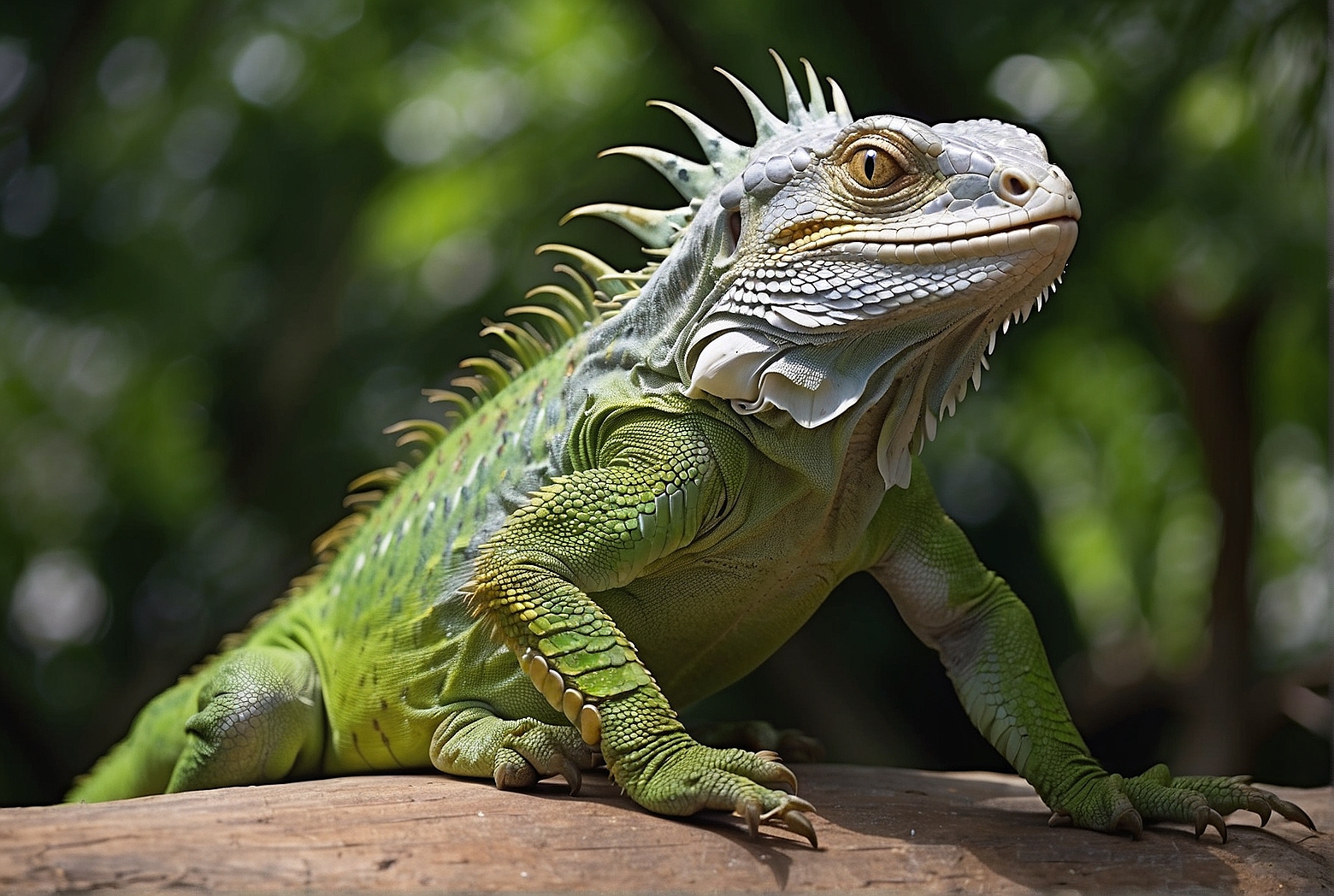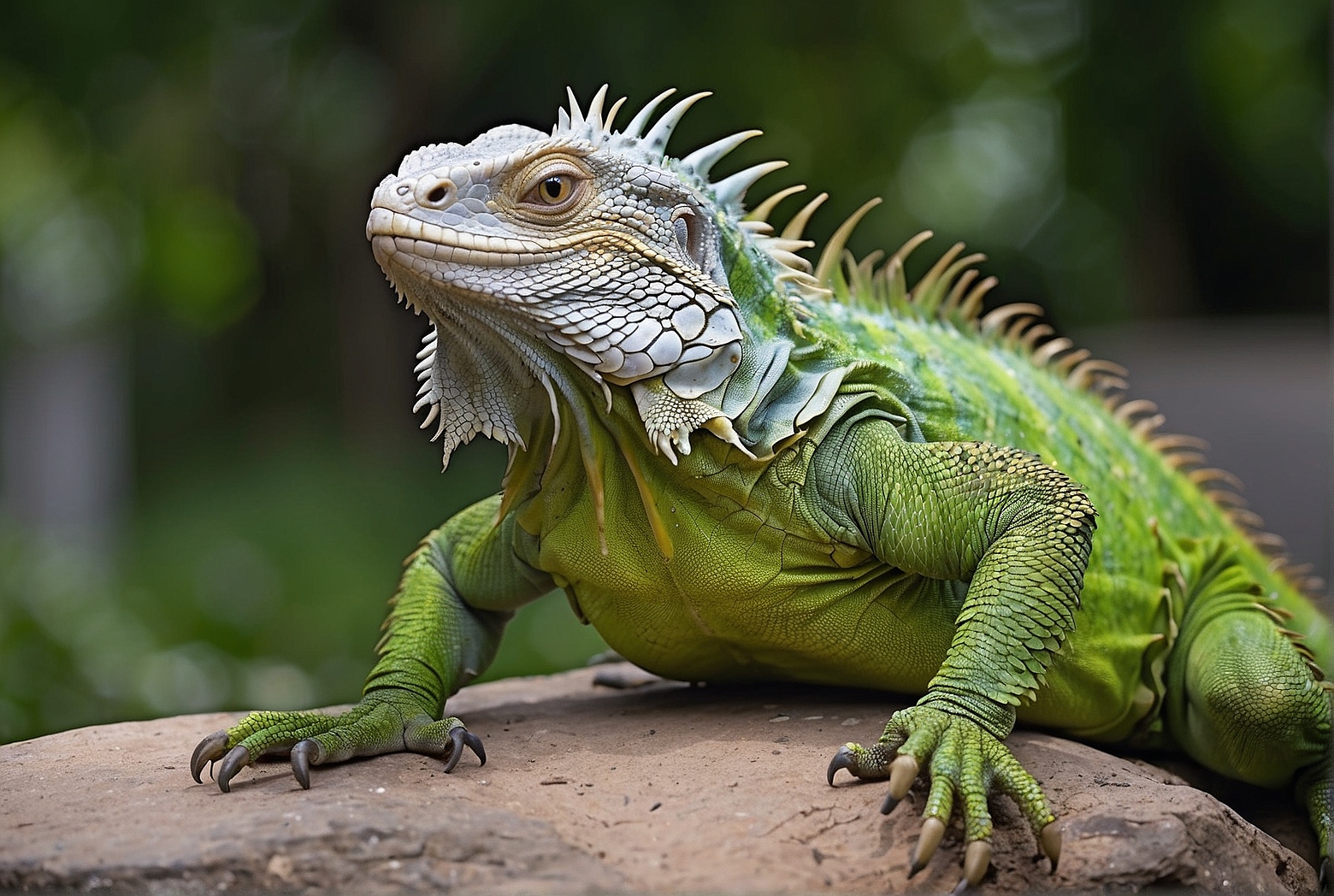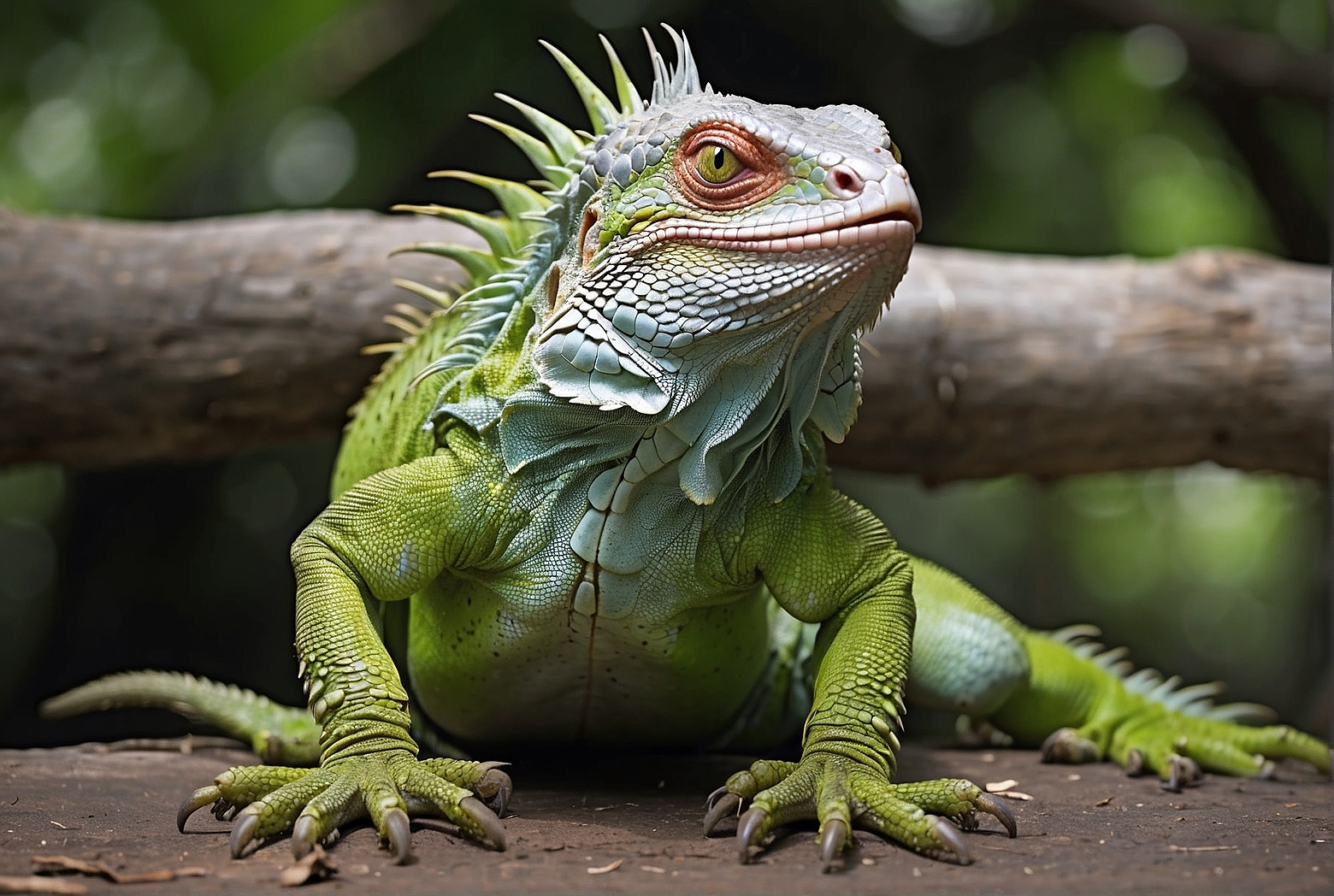So, you’ve got yourself a green iguana and you’re curious about its weight, huh? Don’t fret! In this article, we’ll unveil the secrets of accurately measuring the weight of your scaly companion. Whether you’re a seasoned iguana owner or a newbie to the world of reptiles, we’ve got you covered with simple and effective methods that will ensure you get reliable results. Say goodbye to guesswork and embrace the power of precision when it comes to measuring the weight of your green iguana. Let’s dive right in, shall we?
Introduction
Why is measuring the weight of a green iguana important?
Measuring the weight of a green iguana is an essential aspect of its overall health and well-being. The weight of an iguana can provide valuable insight into its growth, nutritional status, and overall condition. By regularly monitoring the weight of your green iguana, you can ensure that it is maintaining a healthy weight range and detect any potential issues early on. Whether you are a pet owner or an expert in the field, understanding how to accurately measure the weight of a green iguana is vital for their care and welfare.
What factors can affect the weight of a green iguana?
Various factors can influence the weight of a green iguana. These factors include age, diet, growth rate, and overall health. As green iguanas grow, their weight naturally increases. However, poor nutrition or illness can cause unexplained weight loss or gain. By understanding and considering these factors, you can better interpret the weight measurements of your green iguana and provide appropriate care.
Preparing for Measurement
Gathering the necessary equipment
Before measuring the weight of your green iguana, it is crucial to gather the necessary equipment. The primary tool required is a scale capable of accurately measuring the weight of your iguana. Digital scales, hanging scales, and balance scales are popular choices. Additionally, having a towel or mat available to safely move the iguana and provide a non-slip surface is advisable. By having all the required equipment on hand, you can ensure a smooth and stress-free weighing process.
Creating a safe and comfortable environment for the iguana
To obtain accurate weight measurements, it is essential to create a safe and comfortable environment for your green iguana. This includes ensuring that the temperature and humidity levels are suitable for your iguana’s well-being. Providing a quiet space free from disturbances can help alleviate stress and ensure more accurate readings. Additionally, having proper lighting and a calm atmosphere can help your green iguana feel at ease during the weighing process.
Weighing Methods
Using a digital scale
Using a digital scale is one of the most convenient and accurate methods for measuring the weight of a green iguana. Digital scales typically have a large, easy-to-read display and provide precise weight measurements. To use a digital scale, place it on a stable surface and ensure it is properly calibrated. Gently place the green iguana on the scale, making sure its weight is evenly distributed. The scale will then provide an accurate reading, which can be recorded for future reference.

Using a hanging scale
Another option for measuring the weight of a green iguana is using a hanging scale. Hanging scales consist of a hook or strap where the iguana can be securely attached. To use a hanging scale, attach the iguana’s harness or a secure towel to the scale, making sure it can support the weight. Slowly lift the iguana off the ground and allow it to hang freely. The scale will display the weight, which can be recorded after ensuring the iguana’s safety and comfort.
Using a balance scale
A balance scale can also be utilized to measure the weight of a green iguana. Balance scales operate on the principle of equilibrium and have two pans where weights are placed. To use a balance scale, secure a container or basket on one pan and tare the scale to zero. Carefully place the green iguana in the container or basket, ensuring its safety and comfort. Add weights to the opposite pan until the scale achieves balance. The sum of the weights used provides an accurate measure of the iguana’s weight.
Choosing the Right Scale
Consider the size of the iguana
When choosing a scale to measure the weight of a green iguana, it is essential to consider the size of your pet. Smaller iguanas may require scales that can accurately measure in smaller increments to ensure precise readings. Conversely, larger iguanas may require scales with a greater weight capacity. Selecting the appropriate scale for your green iguana’s size is crucial to obtain accurate measurements and ensure their well-being.
Accuracy and precision
Accuracy and precision are key factors when choosing a scale to measure the weight of a green iguana. Digital scales are typically more accurate than hanging scales or balance scales, providing measurements with decimal precision. However, hanging scales and balance scales can still provide sufficient accuracy for most green iguanas. Consider the level of precision needed for your purposes and select a scale that meets those requirements.
Availability and cost
The availability and cost of the scale should also be considered when measuring the weight of a green iguana. Digital scales are widely available in pet stores, online retailers, and even some veterinary clinics. Hanging scales and balance scales may be less commonly found, but can still be purchased through specialized suppliers or online. Consider your budget and the scale’s availability to make an informed decision that suits your needs and financial constraints.
Getting the Iguana on the Scale
Handling the iguana with care
When getting the green iguana on the scale, it is crucial to handle them with care. Iguanas can be easily startled or stressed, so approaching them slowly and calmly is vital. Make sure to support their body while approaching the scale to minimize any potential discomfort or fear. By handling your green iguana gently, you can help alleviate stress and ensure a smoother weighing process.

Using a towel or mat to move the iguana
To safely transport your green iguana from its enclosure to the scale, using a towel or mat can provide stability and comfort. Place the towel or mat near the iguana and gently coax it onto the surface. Iguanas often feel more secure on a non-slip surface, minimizing the chance of them attempting to escape. Slowly and carefully move the iguana to the scale, ensuring its safety and well-being throughout the process.
Minimizing stress for accurate measurement
To obtain an accurate weight measurement, it is essential to minimize stress for your green iguana. Stress can cause temporary weight fluctuations and skew the results. Ensure that the environment is calm and quiet to reduce external factors that may stress your iguana. Additionally, maintaining a gentle and soothing demeanor during handling and weighing can further alleviate stress and improve the accuracy of the measurement.
Taking the Measurements
Ensuring the scale is zeroed
Before placing your green iguana on the scale, it is crucial to ensure that the scale is properly zeroed or calibrated. This means that the scale should read zero when no weight is applied. Zeroing the scale ensures that the weight measured reflects only the weight of the iguana and not any external factors. Take a moment to make sure the scale is correctly set to zero before proceeding with the measurement.
Placing the iguana gently on the scale
When placing your green iguana on the scale, it is important to do so gently and ensure that its weight is evenly distributed. This helps prevent any unnecessary discomfort or stress to the iguana. Slowly lower the iguana onto the scale, allowing it to find its balance. Avoid sudden movements or jarring actions that could startle the iguana and potentially lead to inaccurate measurements.
Recording the weight
After ensuring that the iguana is settled on the scale, it is time to record the weight. Take note of the weight displayed on the scale and record it for future reference. It can be helpful to maintain a record of your green iguana’s weight over time, allowing you to track any changes and identify potential health issues or concerns. By accurately recording the weight, you can monitor your iguana’s progress and provide appropriate care.
Interpreting the Results
Understanding the average weight of a green iguana
To accurately interpret the weight measurement of your green iguana, it is important to understand the average weight range for this species. On average, an adult green iguana typically weighs between 5 to 20 pounds, depending on its size and overall health. However, it is important to note that individual green iguanas may vary in weight due to factors such as age and nutrition. Understanding the average weight range can help you assess whether your iguana falls within a healthy range or requires additional attention.
Comparing the weight to known benchmarks
To gain a clearer perspective on your green iguana’s weight, it can be useful to compare it to known benchmarks. These benchmarks may include weight ranges provided by reputable sources, such as veterinary resources or iguana care guides. By comparing your iguana’s weight to these benchmarks, you can determine if it falls within the expected range for its size and age. Any significant deviations may indicate the need for further investigation or adjustments to its care routine.
Monitoring Weight Changes
Importance of regular weight monitoring
Regular monitoring of your green iguana’s weight is of utmost importance to their overall health and well-being. Weight changes can be an early indicator of health issues such as malnutrition, metabolic disorders, or parasitic infections. By tracking weight regularly, you can detect changes early and seek appropriate veterinary care if needed. Regular weight monitoring also allows you to assess the impact of dietary changes or adjustments to the iguana’s habitat.
Recognizing signs of weight loss or gain
Recognizing signs of weight loss or gain in your green iguana is fundamental to their care. Some common signs of weight loss include visible rib bones, loss of muscle mass, decreased activity levels, and changes in appetite. On the other hand, weight gain may be evident in an overall increase in body size, a noticeably larger belly, or difficulty moving. By regularly observing and handling your green iguana, you can become familiar with their typical body condition and more easily identify any abnormal weight changes.
Factors Affecting Weight
Age and growth rate
Age and growth rate significantly affect the weight of a green iguana. Young iguanas typically exhibit rapid growth and weight gain during their first few years of life. As they reach maturity, their growth rate slows down, and weight gain becomes more gradual. Understanding the typical growth patterns and milestones for green iguanas can help you monitor their weight and ensure optimal growth and development.
Diet and nutrition
Diet and nutrition play a crucial role in the weight and overall health of green iguanas. A well-balanced diet consisting of fresh vegetables, fruits, and occasional protein sources is essential for their growth and well-being. Poor nutrition can lead to weight loss, stunted growth, and various health issues. Ensuring your green iguana receives a diverse and nutritionally optimal diet is paramount in maintaining their healthy weight.
Health and illness
The overall health of a green iguana greatly impacts its weight. Illnesses, such as infections or metabolic disorders, can cause unexplained weight loss or gain. Regular veterinary check-ups are vital for detecting and addressing any health concerns promptly. By ensuring your green iguana receives routine health care, including parasite prevention and necessary vaccinations, you can help maintain their optimal weight and overall wellness.
Conclusion
The importance of accurately measuring the weight of a green iguana
Accurately measuring the weight of a green iguana is essential for their overall care and well-being. By regularly monitoring their weight, you can assess their growth, nutritional status, and overall health. Understanding how to properly measure the weight of a green iguana, choosing the right scale, and providing a safe and comfortable environment are key steps in ensuring accurate measurements.
Tips for maintaining a healthy weight in pet iguanas
To maintain a healthy weight in pet iguanas, it is crucial to provide a well-balanced diet, regular exercise, and appropriate environmental conditions. Ensuring they have access to a variety of fresh vegetables, fruits, and occasional protein sources is essential. Regular monitoring of their weight, along with observing for signs of weight loss or gain, can help address any potential health issues promptly. By adhering to these tips, you can support your green iguana’s overall health and maintain a healthy weight throughout their lives.
